4 Best Budget Studio Headphones 2023 - Under $100
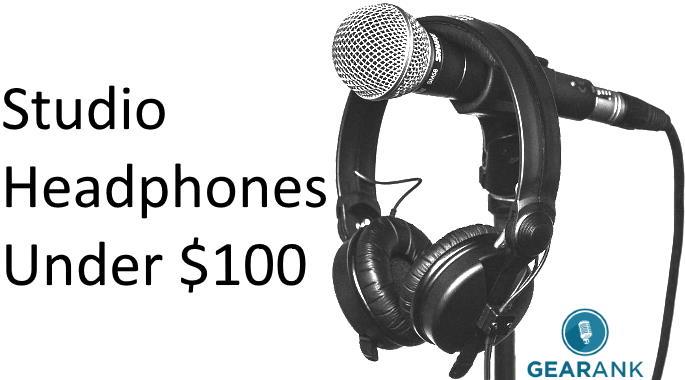
Author & Contributors
Raphael Pulgar
I've been an audio engineer for 20 years specializing in rock and metal recordings. I also play guitar and produce original music for my band and other content creators.
Best Cheapest Studio Headphones Under $50
Samson SR850 - Semi-Open
Cons
- A bit bulky
- Not for tracking
Pros
- Deep bass and clean highs
- Wide frequency response
- Good stereo imaging
- Comfortable fit for long sessions
The SR850 studio headphones from Samson sports a semi-open-back design at an affordable price. Making them semi-open allows for a wider soundstage and better stereo imaging.
These budget studio headphones give deep, rich bass and clean highs with a wide enough frequency response. The 50mm drivers provide depth and low-end resolution. It has a clear and detailed sound profile, with good stereo imaging.
Just don't push the volume too high to prevent harshness in the treble frequencies. Note that because of its semi-open back design, sound can bleed into mics when tracking.
The self-adjusting headband provides stability and comfort for long periods of listening sessions. It doesn't physically hurt the ears as much as others do, even after hours of mixing, editing, and referencing.
Note that it is a bit big, especially for those who are used to smaller cans.
They come with a 1/8" to 1/4" gold adapter, which is handy, allowing you to switch between using them with studio and consumer gear.
It would've been better if it had detachable cables, but that's difficult to expect, given the price.
These are the best budget studio headphones if you are looking for a pair with a clean bass response and sound quality for mixing music.
Specifications
- Type: Semi-Open
- Driver Type: Dynamic
- Driver Diameter: 50 mm
- Magnet Type: Neodymium
- Frequency Response: 10 Hz - 30 kHz
- Maximum Input Power: Not Specified
- Sensitivity: 98 dB
- Impedance Rating: 32 Ohms
- Weight: 0.95 oz
- Cable: 1/8” (3.5 mm) with 1/8’ (3.5 mm) to 1/4” (6.3mm) adapter- gold-plated
| Website | Source | *Rating Value |
| Audio Fanzine | Intip | 100/100 |
| YouTube | BubVisuals | 96/100 |
| YouTube | Techkhamun | 91/100 |
Yamaha HPH-50 - Closed Back
Cons
- Bass frequencies are a bit lacking
- Not good for pro-level mixing
Pros
- Neutral sound signature
- Audible and clear vocals
- Great for monitoring keyboards and edrums
- Good general monitoring and tracking solution
The Yamaha HPH-50 is marketed as affordable studio monitoring headphones. Despite being affordably priced, they feature great build quality, as expected from a major manufacturer like Yamaha.
Sound is produced via 38mm neodymium drivers that are tuned to the closed earcup design. A swivel mechanism and velour pads round out the headphone for comfort and fit.
Being from Yamaha, it is popular among those who play electric piano, pianos, and other classical instruments, because they sound lively and present.
It also works particularly well for monitoring electronic drums.
The sound signature is fairly neutral and vocals are audible and clear, making the HPH-50 a good general monitoring and tracking solution for home studios.
But note that you the bass frequencies are a bit lacking, which can be a problem when mixing.
Still, the Yamaha HPH-50 are one of the best cheap studio headphones for monitoring instruments like electric piano, electronic drums and synthesizers.
Specifications
- Type: Closed-Back
- Driver Type: Dynamic
- Driver Diameter: 38 mm
- Magnet Type: Neodymium
- Frequency Response: 20Hz-20kHz
- Maximum Input Power: 1000 mW
- Sensitivity: 103 dB
- Impedance: 35 Ohms
- Weight: 4.64 oz
- Cable: 6.5'
Best Cheap Headphones Under $100
Vic Firth SIH2 Stereo Isolation Headphones - Closed Back
Cons
- Not suitable for mixing and mastering
- Long sessions may be unpleasant
Pros
- High SPL background noise isolation (-25dB)
- Great for tracking drums and guitar amps
- Also viable for quiet tracking of vocals
- Doubles as hearing protection
Hearing protection and studio sound don't always go together. The Vic Firth SIH2 Stereo Isolation Headphones were designed to be a monitoring headphone for high SPL environments. They make great tracking headphones for drummers and guitarists who want to be in a room with loud amplifiers
While primarily designed for drummers, the -25dB passive noise isolation from external noise make them a great tool for monitoring while placing microphones around drumkits and guitar amplifiers to find the sweet spots. Given its isolation capacity, it is a bit bulky and heavy, which can be uncomfortable when used for long sessions.
The isolation of its closed back design also becomes useful for tracking vocalists as there is little to no leakage from the headphones on to the mics. This is great for quiet passages that need the singer/speaker to be up close to microphones.
Note that while it sounds clear and full for tracking and monitoring, its frequency response curve isn't suited for mixing and critical listening. The entry-level price points are not where you can get mixing headphones anyway.
If you're looking for a pair of studio headphones for tracking loud instruments, the SIH2 by Vic Firth should be on the top of your list. If you're looking for accurate sound quality, look elsewhere.
Specifications
- Type: Closed
- Driver Type: Mylarcon Dynamic Speaker
- Driver Diameter: 50mm
- Magnet Type: Not Specified
- Frequency Response: 20Hz-20kHz
- Maximum Input Power: Not specified
- Sensitivity: Not specified
- Impedance: 55 Ohms
- Weight:8.4 oz
- Cable: Stereo plug – 3.5mm (1/8-inch) with 6.3 mm (1/4”) screw-on adapter
| Website | Source | *Rating Value |
| Drummer Talk | Dave Kropf | 80/100 |
| Parlor Live | Editor | XX/100 |
Sony MDR-7506 - Closed-Back
Cons
- The pads can get hot and are a bit fragile
- Can be a bit trebly for pro-level mixing
Pros
- Flat midrange and honest overall sound
- Suited for both monitoring and mixing
- Foldable for easy storage and transport
- Versatile and portable
Not to be confused with the DJ oriented MDR-V6, the MDR-7506 is essentially the studio headphone version with minor changes in aesthetic and wiring (individual ground on the 7506 vs common ground on the V6) giving a slight imaging and frequency response difference between both.
MDR stands for the Micro Dynamic Receiver tech they developed for the headphone series. Sony changed the magnets to Neodymium from Samarium Cobalt sometime along the model's nearly 30 year production run so far.
The MDR-7506 has a flat midrange and honest overall sound signature, and this makes it suited for both monitoring and mixing. This versatility is a rarity in cheap studio headphones. This is the reason why the MDR-7506 continues to be a market favorite workhorse set of studio headphones.
Note that it can be a bit too bright sounding for those who are used to more expensive studio headphones. Still, it offers good enough sound quality for monitoring, and is one of the best inexpensive headphones at doing this.
Being foldable, the MDR-7506 is easy to store and carry around, making it a good all-in-one studio headphones solution for musicians and studio technicians that are always on the move. Be warned that the pads need to be handled with a little more care, and they can also get hot if used for an extended period of time.
Looking for one set of studio headphones to use for nearly all music production tasks? The MDR-7506 is tough to beat at this budget level especially for versatility in the studio. If you want nothing less than the best headphones under 100, then this is for you.
Specifications
- Type: Closed
- Driver Type: Dynamic
- Driver Diameter: 40mm
- Magnet Type: Neodymium
- Frequency Response: 10 - 20,000 Hz
- Maximum Input Power: 1,000mW
- Sensitivity: 106 dB/W/m
- Impedance: 63 Ohms
- Weight: 9.52 oz.
- Cable: 9.8 ft. coiled cable Connection, 1/8" Gold plated stereo jack plug and 1/4" adapter (6.35 mm)
| Website | Source | *Rating Value |
| Sound on Sound | Hugh Robjohns | 84/100 |
| Audiofanzine | Studio C&P | 100/100 |
Things to Consider to When Buying Budget Studio Headphones
-
The ear cups of closed-back reference headphones have the best isolation which prevents sound from bleeding into the microphone while recording. They also prevent external noise from affecting the perceived monitor signal. This signal isolation is also important for electric guitar headphones.
Open-back headphones may leak too much sound back into the microphone. There have been cases of open-back headphones actually producing feedback because of this.
-
Sound quality often decreases as isolation of headphones increases, especially for budget headphones. Sound engineers recommended using Open Backs to optimize sound quality and space over isolation when mixing. Closed-back headphones are not generally recommended for mixing and mastering because they tend to have sound build up, especially for lower frequencies.
You want the least amount of sound accumulation and a flat distribution of frequencies in order to have a clear and accurate mix for mixing and mastering. This is important if you want a well mastered song, or a good Remastered track. Note that good quality open back headphones are found at a much higher price point.
-
Studio headphones are often used for critical listening, such as monitoring a tracking session. It's important to have a flat frequency response to set and compare sound levels for achieving an accurate sound. It's preferred to be as close to studio monitors as possible. Most headphones have a 20 to 20,000 Hz frequency range since this is the range the human ear can hear. Although, some headphones have an extended frequency range providing deeper responses.
Wider range frequencies make better tone, responses and handling in the lows, mids and highs. If you produce music or record instruments with a lot of bass, it's better to go for a pair with notable low frequency response. Premium studio headphones have wider frequency response, but some of the best affordable headphones mentioned here can come close.
-
Recording a lot of takes, and mixing and mastering takes up a lot of time. This involves wearing headphones for long hours that may cause too much pressure on your ears or your head. It's important to look for studio headphones with a comfortable fit. Factors such as ear pad comfort, headband comfort and weight need to be taken into consideration. Ear-pads with soft materials and which are well-ventilated are best for prolonged usage.
The headband should be tight enough to keep the ear cups at the right position over your ears. They shouldn't be so rigid that they won't clamp down properly on your ears. Lighter headband-style headphones are usually more comfortable than heavier ones. The lower the weight of the headphones, the better you will feel over long hours of usage.
Prolonged use will separate the wheat from the chaff, good cheap headphones will feel more comfortable than bad ones. Thankfully, the best budget headphones mentioned in this guide all are well received for the comfort they provide. They won't be as comfortable as earphones, but they deliver audio better, which gives them the advantage in the Headphones vs Earphones discussion.
-
Tracking is the process of recording a new track in a multitrack recording, sometimes referred to as 'laying down a track'. You wear headphones to hear the backing tracks while recording a new one with microphones.
Monitoring is listening through headphones when recording and to a lesser extent, mixing.
Sound stage refers to the positions and directions sound appears to come from while listening. Headphones with a large sound stage are good at representing these subtle effects.
Tracking and Monitoring
Mixing and Mastering
Frequency Response
Comfort and Durability
Headphone Specific Terminology
Cheap Studio Headphones Selection Methodology
The first edition was published in 2017. The current edition was published on July 10, 2023.
This guide focuses on finding the best studio headphones in the sub $100 price range, and as always. This means that some popular headphones priced above $100 are not included, like the Audio Technica ATH-M50x. We did our best to ensure that we only include those that you can readily buy from major music retailers in the USA.
For this update, we ended up with a short list of 29 sets of headphones, including ones from some of the best headphone brands like the Beyerdynamic DT 240 Pro, Audio Technica ATH M40x, Sennheiser HD 280 Pro, AKG K240 Studio, and others. We then collected and analyzed ratings and reviews from retailers, forum discussions and expert recommendations. The data piled up to over 130,000 sources which were processed by the Gearank Algorithm which resulted in rating scores out of 100 for all the short-listed headphones.
We then highlighted the top rated ones and divided the list into sub $50 and sub $100 price categories. This makes it easier to find the headphones that fit your budget. For more information about our methods see How Gearank Works.
About the Author and Contributors
Here are the key people and sources involved in this guide's production - click on linked names for information about their music industry backgrounds.
Lead Author & Researcher
Raphael Pulgar
I've been an audio engineer for 20 years specializing in rock and metal recordings. I also play guitar and produce original music for my band and other content creators.
Some of the recording gear I use in my studio includes the Focusrite Scarlett 18i20, Focusrite Scarlett Solo, Samson QH4 Headphone Amp and Cloudlifter CL-1. My mics include Aston Origin, Aston Element, Shure SM57, Rode NT1, Rode PodMic and MXL V67G.
Contributors
Alexander Briones: Supplemental writing.
Jason Horton: Editing and Illustrating.
Media
Main/Top Image: By Gearank.com based on a photograph in the public domain.
The individual product images were sourced from websites, promotional materials or supporting documentation provided by their respective manufacturers.



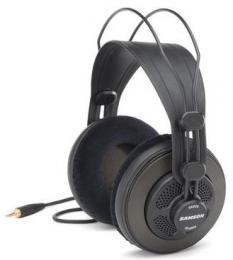
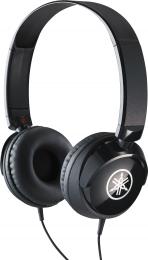
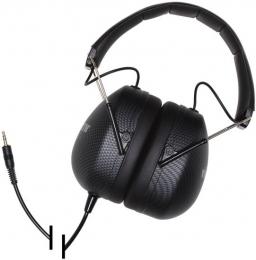
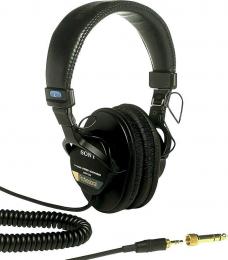
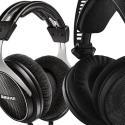
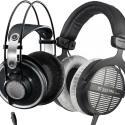
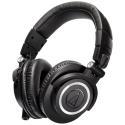
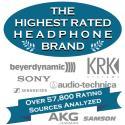
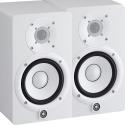
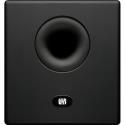
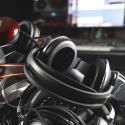
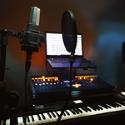





Comments
The following headphones came
Submitted by Jason Horton on
The following headphones came off our recommended list when we published the November 2022 Edition:
Publication of our January
Submitted by Jason Horton on
Publication of our January 2022 Edition resulted in the following headphones coming off the recommended list above:
Our January 2021 update
Submitted by Jason Horton on
Our January 2021 update resulted in the following headphones being removed from the recommended list above, but you can still see our analysis of them:
Today we removed the Sony MDR
Submitted by Jason Horton on
Today we removed the Sony MDR-7502 from the recommended list above due to them being discontinued.
As a result of our January
Submitted by Jason Horton on
As a result of our January 2020 update the following headphones came off our recommended list above but you can still read our analysis of them:
First and foremost love the
Submitted by joe (not verified) on
First and foremost love the site and great article. I have the AT M20s and feel they out-perform their bigger brothers! However about this: "Monitoring in this context usually refers to listening to backing tracks through headphones while tracking.." ?? I've never heard the word used in that context, and I've done a lot of tracking. Monitoring and tracking are two different activities. If you're recording, you're tracking; you are not "monitoring." Just because you're listening to music while doing so (which is almost always the case) doesn't make it monitoring. No offense but IMO to say otherwise only invites ambiguity and confusion to the term (and God knows there's more than enough of that with insider terminology as it is, ha).
Thanks for pointing that out
Submitted by Jason Horton on
Thanks for pointing that out Joe. I had meant to remove that during editing but it slipped through - it's fixed now.
As a result of the July 2018
Submitted by Jason Horton on
As a result of the July 2018 update of this guide, the following headphones were removed from our recommended list above: